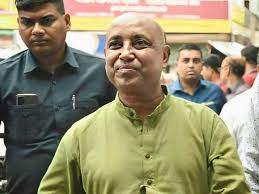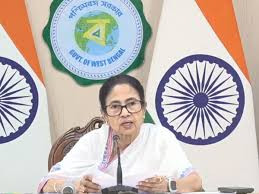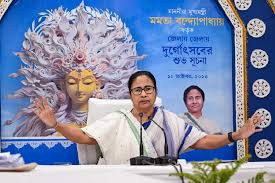CPIM in Intense Discussion About the Importance of the Party in East and West Bardhaman

IIE DIGITAL DESK :The Communist Party of India (Marxist), or CPIM, has been holding crucial internal discussions regarding its political strategy and influence in the districts of East and West Bardhaman, West Bengal. The party’s leadership is deeply focused on the growing importance of these districts, which have become critical battlegrounds in the state’s political landscape. Both East and West Bardhaman have witnessed a shift in political dynamics, and the CPIM is now contemplating its future role and strategy in these regions to strengthen its presence.
East and West Bardhaman, two historically significant districts in the state, have seen changes in voter behavior and party allegiance over the years. The region has long been known for its strong support of left-wing parties, particularly CPIM, which had previously enjoyed a substantial voter base here. However, in recent elections, the district has seen a rise in support for the Trinamool Congress (TMC), while the Bharatiya Janata Party (BJP) has also made inroads, particularly in rural areas. This shift in political trends has sparked a series of deliberations within the CPIM leadership regarding how to regain lost ground and reassert its influence in the region.
The discussions inside CPIM have centered around the importance of revitalizing the party’s grassroots connections in East and West Bardhaman. Leadership at various levels believes that to regain political momentum in these districts, the CPIM must reconnect with its traditional support base, which includes working-class families, industrial workers, and peasants. Additionally, the party is focusing on the need for strengthening its organizational structures and expanding its outreach to new demographics, including younger voters who may not have experienced the party’s previous dominance.
A significant part of the debate within the party has revolved around how to address the shifting political allegiances in the region. In the 2021 West Bengal Assembly elections, both East and West Bardhaman districts saw a marked decline in CPIM’s vote share, while the TMC gained significant support, particularly in urban and semi-urban areas. The BJP also made inroads, primarily in the rural pockets. The CPIM leadership recognizes that the party must reassess its strategies to counter these changes and appeal to voters who may have moved away due to disillusionment or dissatisfaction with the party's recent performance.
The CPIM’s discussions have highlighted several key areas for action. One major focus has been strengthening the party’s presence at the local level, especially through active engagement with community issues. The leadership believes that by focusing on local concerns such as employment, education, healthcare, and infrastructure, the CPIM can regain trust and build a more solid base. This local-level engagement is seen as critical to connecting with voters on the ground and ensuring that the party is seen as a relevant force in addressing everyday concerns.
Another issue under consideration is the party’s alliance strategy in East and West Bardhaman. CPIM is exploring the possibility of forming strategic alliances with other left-leaning or opposition parties to challenge the dominance of TMC and BJP in the region. However, this has been a contentious topic, with some sections within the party advocating for a more independent approach, while others believe that alliances may offer a chance for greater influence. There is also the challenge of dealing with factionalism within the party, which has been a longstanding issue in certain parts of West Bengal, including Bardhaman.
The discussions also focus on outreach to the youth. CPIM leaders recognize the importance of appealing to younger generations who are often more attracted to new political movements or parties with a fresh approach. Engaging with the youth is seen as essential to securing a future voter base and ensuring the long-term sustainability of the party's influence in the region.
In conclusion, the CPIM's internal discussions on East and West Bardhaman underscore the party’s commitment to reclaiming its place in these critical districts. With political dynamics constantly shifting, the CPIM leadership is exploring various strategies to adapt and connect with voters. Whether through revitalizing grassroots movements, forging alliances, or engaging the youth, the party is working towards regaining its influence in these once-stronghold areas. The outcome of these discussions will likely have a significant impact on the future of CPIM in West Bengal.
You might also like!















